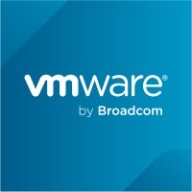


Microsoft Configuration Manager and vCenter Configuration Manager compete in IT management and virtualization. Microsoft Configuration Manager stands out with its comprehensive compliance management and deployment capabilities.
Features: Microsoft Configuration Manager offers robust software and application deployment, efficient OS deployment, and detailed compliance reporting. vCenter Configuration Manager provides efficient virtual machine management, high availability through vMotion, and advanced automation features.
Room for Improvement: Microsoft Configuration Manager could improve ease of use, PowerShell integration, and broaden platform support. vCenter Configuration Manager needs better documentation, intuitive user interfaces, and improvements in automation features.
Ease of Deployment and Customer Service: Microsoft Configuration Manager is usually implemented on-premises or hybrid cloud with a large community support base, though some find deployment complex. vCenter Configuration Manager offers flexible deployment and is praised for its strong support, though tier escalation may slow response times.
Pricing and ROI: Microsoft Configuration Manager is noted for its high upfront costs but provides value through automation and compliance, resulting in substantial ROI. vCenter Configuration Manager has significant value for managing virtual environments, though its costs might be high for smaller businesses. Both solutions can boost productivity and infrastructure management efficiency.
| Product | Market Share (%) |
|---|---|
| Microsoft Intune | 9.4% |
| Microsoft Configuration Manager | 11.5% |
| vCenter Configuration Manager | 0.8% |
| Other | 78.3% |




| Company Size | Count |
|---|---|
| Small Business | 116 |
| Midsize Enterprise | 46 |
| Large Enterprise | 152 |
| Company Size | Count |
|---|---|
| Small Business | 20 |
| Midsize Enterprise | 13 |
| Large Enterprise | 64 |
| Company Size | Count |
|---|---|
| Small Business | 26 |
| Midsize Enterprise | 11 |
| Large Enterprise | 19 |
Microsoft Intune provides centralized management of mobile devices and applications, ensuring security, compliance, and productivity through integration with Microsoft services like Microsoft 365 and Azure Active Directory.
Organizations use Intune for managing mobile devices and applications, enhancing security and compliance across platforms. With features like single sign-on, conditional access, and zero-touch deployment via Autopilot, it facilitates efficient operations. Intune's scalability, easy enrollment, and capabilities such as remote wipe support diverse device management, offering robust data protection and efficient operation. Despite its features, improvement areas include reporting, compatibility with non-Microsoft devices, and better support for macOS and Linux devices.
What are the key features of Microsoft Intune?
What benefits should users look for in reviews?
In industries such as finance, healthcare, and education, Microsoft Intune is implemented to ensure secure and compliant device management. Companies leverage its capabilities to deploy security policies and manage both corporate-owned and BYOD environments, facilitating a unified approach to data protection and compliance.
Microsoft Configuration Manager streamlines IT management with features such as software deployment, patch management, and automation, centralizing operations for Windows environments. Integration with Microsoft products allows efficient oversight of workstations and servers.
Microsoft Configuration Manager provides comprehensive IT management, offering software deployment, patch management, and application pushing. Automation reduces manual tasks, ensuring consistency across systems. Centralized management enables standardized OS deployments, application updates, and configuration integrity. Integration with Microsoft products facilitates seamless operations, while hardware and software inventory, compliance reporting, and remote control functions enhance IT management. Users seek improvements in application deployment for those without deep scripting knowledge and desire better WSUS control, PowerShell and Intune integration, Linux compatibility, and user interface enhancements. Performance improvements are requested for remote user management and third-party application support.
What features enhance Microsoft Configuration Manager?Microsoft Configuration Manager is widely implemented in organizations to manage Windows workstations and servers. It is essential for deploying operating systems and applications, managing software updates, and conducting hardware and software inventories. The tool is crucial for endpoint and configuration management, ensuring compliance, and automating processes like patching and vulnerability management. Industries such as finance, healthcare, and education rely on Microsoft Configuration Manager to keep systems secure and operational, adapting it to address their specific needs and challenges in maintaining diversified IT environments.
vCenter Configuration Manager is a powerful configuration management tool that is designed to enable organizations to ensure that any environment that they use to conduct business is configured in the most effective possible way. It can automate configurations consistently across virtual, physical, and cloud environments. Additionally, it enables users to place critical functions into the hands of the solution thereby avoiding the possibility that human error will reduce a business’s operations. It also hardens operations against bad actors who look for holes in a user’s security compliance policies that they can exploit.
vCenter Configuration Manager Benefits
Some of the ways that organizations can benefit by choosing to deploy vCenter Configuration Manager include:
vCenter Configuration Manager Features
Reviews from Real Users
vCenter Configuration Manager is a highly effective solution that stands out when compared to many of its competitors. Two major advantages it offers are its intuitive and simple design and its ability to scale according to the needs of its user.
Moses S., a project manager at Swakop Uranium, writes, “The platform is straightforward and user-friendly. A large knowledge base is not required to begin using it.”
Raju P., an Information Technology manager at Sikraft, says, “We can scale the solution as needed.”
We monitor all Configuration Management reviews to prevent fraudulent reviews and keep review quality high. We do not post reviews by company employees or direct competitors. We validate each review for authenticity via cross-reference with LinkedIn, and personal follow-up with the reviewer when necessary.